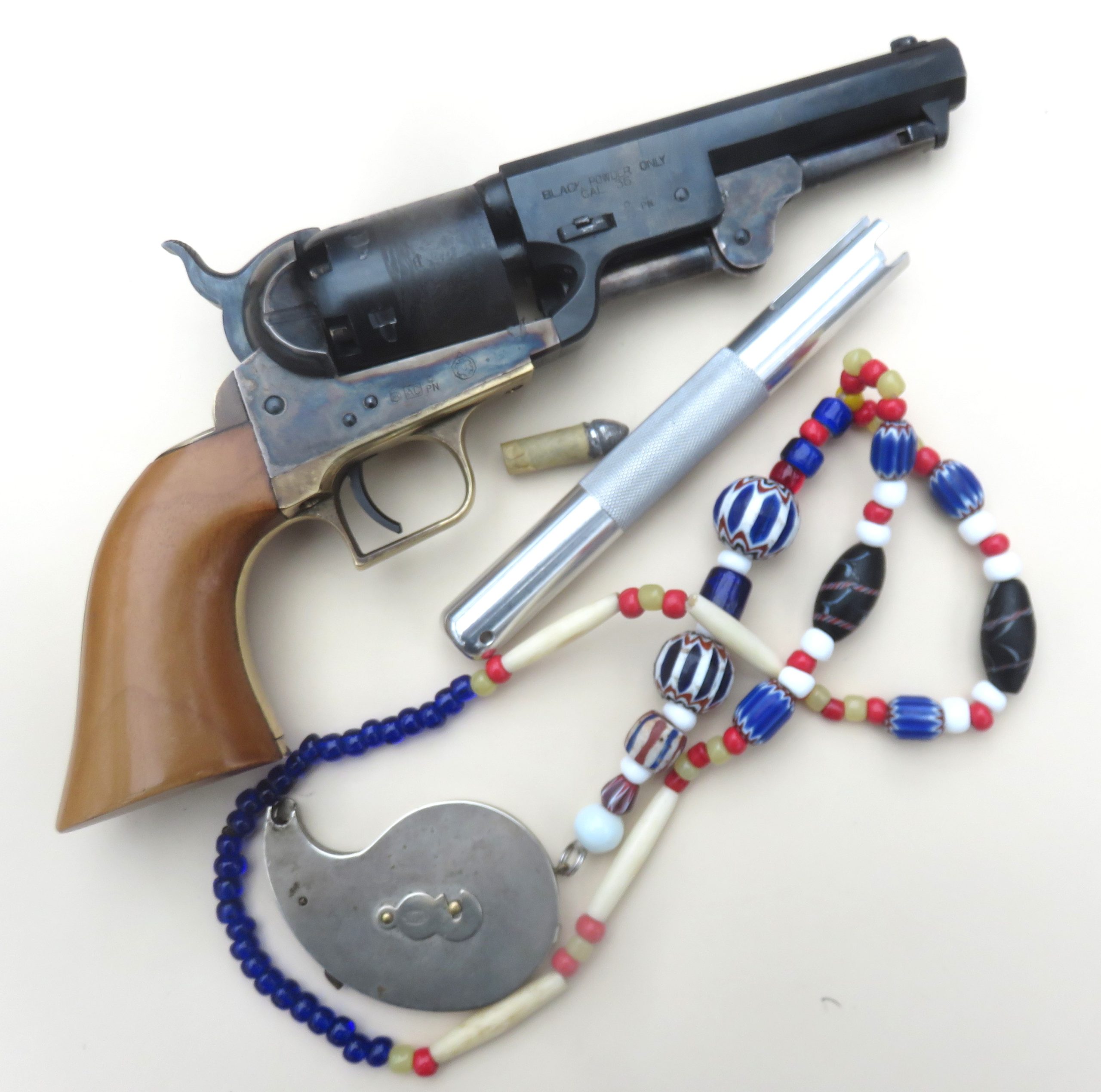
By Mike Nesbitt | Contributing Editor
While my short-barreled .36 Navy replica from Uberti was shooting fairly well, there was more I wanted to do with that gun and more or better performance was also wanted from it.
There is a whole lot that can be done with a .36 Navy cap & ball revolver and several accessories are available for those guns. Follow along with me while I do some shooting with my short-barreled .36 caliber replica, making some changes to the gun along the way.
To begin with, I wanted a better front sight than the rather rounded and coarse brass bead at the gun’s muzzle. That brass bead more than completely filled the fairly small notch in the top of the hammer which is the rear sight. I quickly considered changing that front sight and began noticing, with greater interest, that several original .36 Navies had small dovetail front sights on their barrels, including one of Wild Bill Hickok’s guns. So, a search was made on where to find a suitable dovetail front sight.
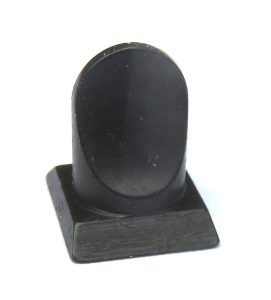
With a small dovetail front sight, something like what Hickok had on his revolver, the sight could be drifted to the left, moving the alignment of the barrel to the right as well as the point of impact for the bullets. And a new front sight would greatly improve sight picture while aiming.
My search ended fairly quickly. Rather than combing the market for muzzleloader sights, which are almost all gathered for the rifle market, I happened to wander on to the web site of VTI Gun Parts (www.vtigunparts.com/store/). VTI specializes in parts for replica guns. I’ll admit that I ventured there while looking for a new cylinder for another revolver but my eyes were on the lookout for a new front sight as well. That search was quicky crowned, the replicas of the Remington 1858 Army revolver, as well as other Remington revolvers, have a small dovetail front sight. One of those was quickly ordered.
It was delivered promptly and then the next step was to get it installed. For that job I turned to Allen Cunniff. He has a fine shop for doing tricks like that and enjoys performing some unusual tasks. Soon enough, the front sight was installed, at full height. To say the least, that Remington sight on the short-barreled Colt-style revolver was certainly too high. We knew it would need to be lowered. How much lower was a question that could only be answered by shooting with it.
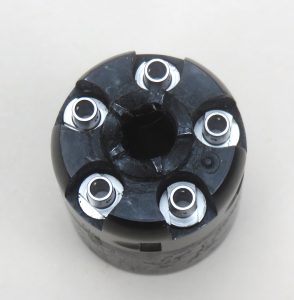
To begin with, I used a small grinder to “file” down the new sight, maybe halfway. I knew the sight was far too high and the top half was taken off simply as quickly as possible. Then more careful steps were taken, based on where the bullets were hitting during the “shooting tests.” Those “shooting tests” were several, mainly just six shots each, and when bullet holes started appearing on the targets, the front sight was filed down further to bring the point of impact up to the middle. This shooting was done just at 30 feet.
The final session involved maybe just three strokes with the file, then six shots were fired, offhand, with a two-hand hold, at the target shown with the revolver. I don’t remember if the low shot was the first shot or not, it could have been any one of the six shots, but the group size as well as the center of the group certainly made getting the new front sight very worthwhile.
One reason why I prefer my guns to hit “dead on” instead of using a 6 o’clock hold is because of the varying sizes of targets. This target that I am telling you about is a good example. The bullseye, or the “black,” covers the X, 10, 9, & 8 rings. We often shoot at targets which are the same size but the black also covers the 7 ring which means this target’s bullseye was much larger. If I held at 6 o’clock on that target, the group would end up below the target’s center.
Actually, because the group on that target was so rewarding, I have jumped ahead in my story, there’s more to tell you about. When I first got this gun, it was taken to the range and shot but just getting six shots off was an accomplishment. The gun’s old nipples were, perhaps, “fattened” by repeated hits from the hammer and the caps would not fit well enough to fire regularly. Sometimes three or even four hammer-falls were needed to fire the caps. That had to be fixed.
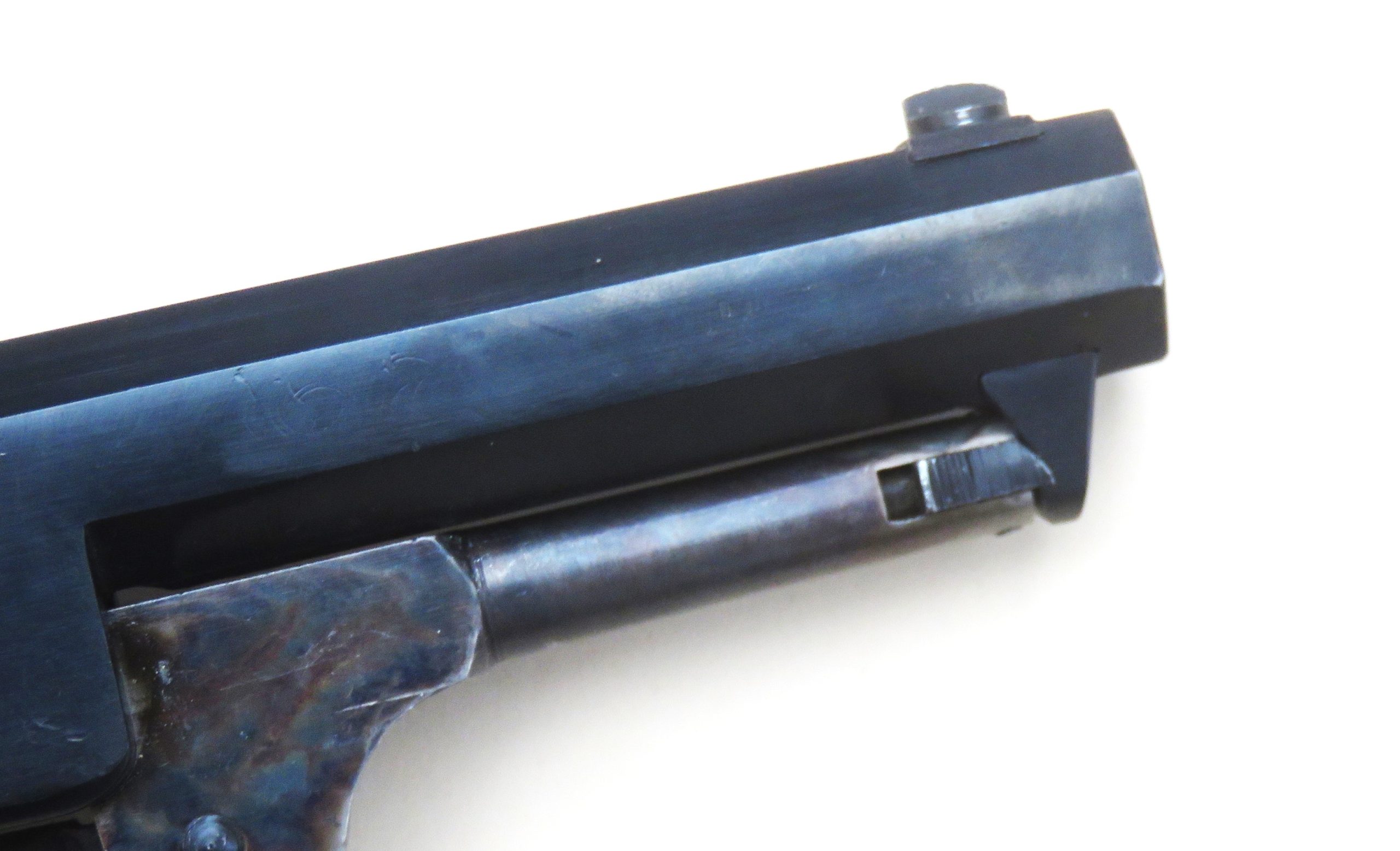
The best “fix” would be new nipples and the very best fix would be with the best nipples. I was advised to get “SliXShot” nipples from SliXprings. (Visit their web site at www.slixprings.com.) These are made from 416 stainless steel, very hard to resist battering.
Another problem with the old nipples was also noticed. When the gun fired, the blast would often blow the fired cap off of the nipple, sometimes to fall into the groove in the gun’s frame and then blocking the hammer’s fall for the next shot. That simply brings any shooting to an end until the flattened fired cap can be removed from that groove. In fact, I had a couple of fired caps fall down in front of the hammer, going all the way into the revolver’s interior. Once inside the gun, the fired caps could jam the gun completely.
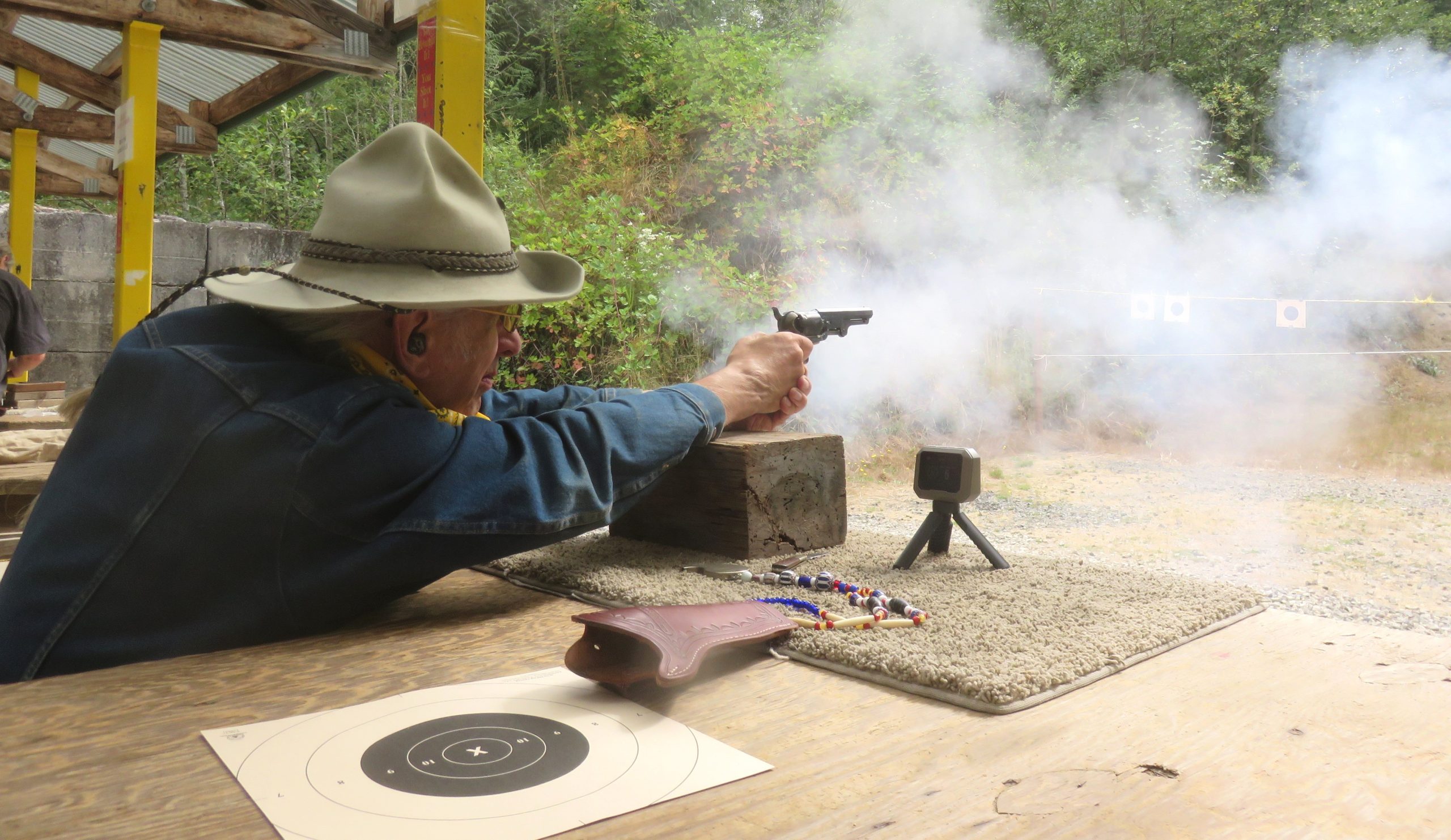
The SliXShot nipples are a far superior design. They have a larger hole bored in them to capture more of the cap’s flash. They also have cross-holes through the barrel of the nipple to help reduce the back pressure. On top of that, I know you’ll appreciate the excellent customer service the owner provides.
The new nipples added to the shooting with the first try. Now I will always recommend Slix-Shot nipples. And I recommend their nipple wrench as well, called their SliX-Wrench, built to be used. One more item was purchased from SliXprings, what they call the SliX-Hand. The “Hand” is an aluminum extension for the loading lever which adds leverage, useful for getting some of those hard-to-chamber bullets into the gun’s cylinder. Let me talk about using the SliX-Hand in just a little bit, when we get to loading with the paper cartridges.
Most of my shooting with this .36 Navy is done with .375” diameter round balls Those are generally cast from a well broken-in RCBS mold which I’ve had for many years. The round balls weigh just 80 grains, which more or less puts the .36 Navy in a small-gun category. Lately I’ve been loading those over 22 grains of Schuetzen 3Fg powder and the shooting, with ignition provided by CCI #11 percussion caps, has been going quite well. My final target, which shows how the gun’s front sight is at the right height, holds one in the 9-ring and the other five shots all went into one jagged hole in the X and 10 rings. I’m certainly quite pleased with that target.
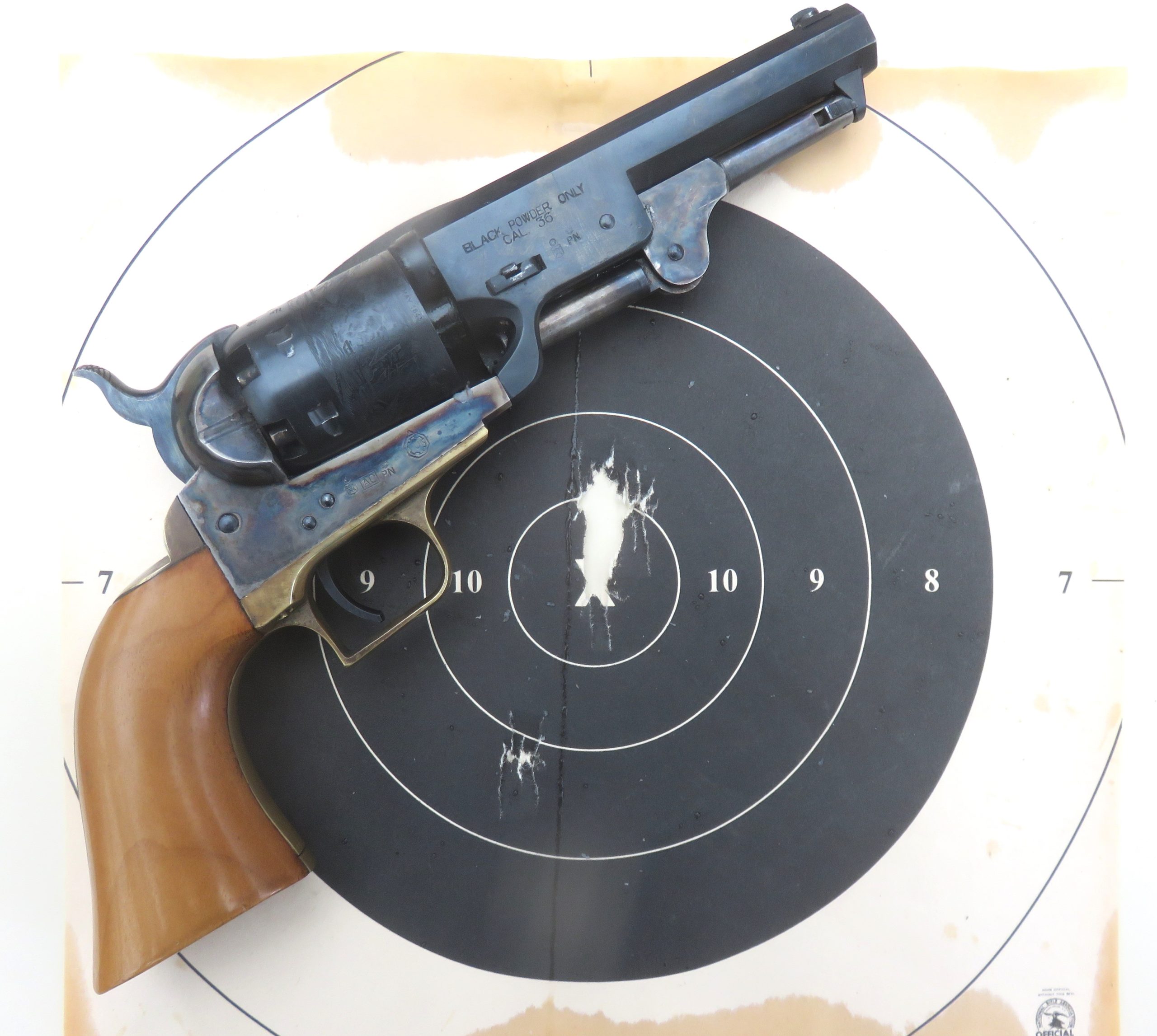
And just moments later, I shot another target after loading the gun with paper cartridges which held 17 grains of GOEX 3Fg powder under a conical ball, weighing 130 grains, which was cast from an Eras Gone bullet mold. (Eras Gone makes several styles of conical bullet molds, pay their web site a visit at www.erasgonebullets.com.) The conical balls are more difficult to seat in the mouths of the cylinder’s chambers and that’s where the SliX-Hand was used. That “hand” is quite a tool, making the loading of the chambers much easier and I’ll certainly use it again.
Those conical bullets will probably be used again too and if I ever think I needed to get prepared for “serious” shooting with the .36, the conical bullets would be the choice. They’d pack more punch and, of course, would have greater penetration. On the target I shot, again at just 10 yards, the bullets grouped very well, just a touch higher than the round-balls, with two hits in the 9 ring and the other four in the 10 and X rings. They averaged a velocity of 665 feet per second which was just about the same speed as the round ball load.
The paper cartridges were “rolled” using the paper cartridge kit from Guns of the West. Making the paper cartridges is easy and having those cartridges ready for loading is a convenient way to carry more ammo. For more information on Guns of the West, visit their web site at gunsofthewestllc@gmail.com or just go shopping at gunsoftheweststore.com.
While more paper cartridges will certainly be used, I’m still thinking the .375” round balls will be my favored bullets for this revolver. Those certainly seem to do the trick for just plain shooting fun. Part of my “kit” for this six-gun is a small rawhide bullet pouch made by Bob DeLisle. It holds the .375” balls quite nicely, and previously I had used that small hard pouch for holding birdshot, and now nothing but .375s will be carried in it. My “kit” for this gun includes the ball pouch, the powder flask, a “jar” of October Country’s Bumblin’ Bear Grease for lube, and my revolver capper which is loaded with CCI #11 percussion caps. With those rather few things, which all seem to fit in a good pocket, I can go to the range or even down the trail and reload the cap & ball revolver as needed.
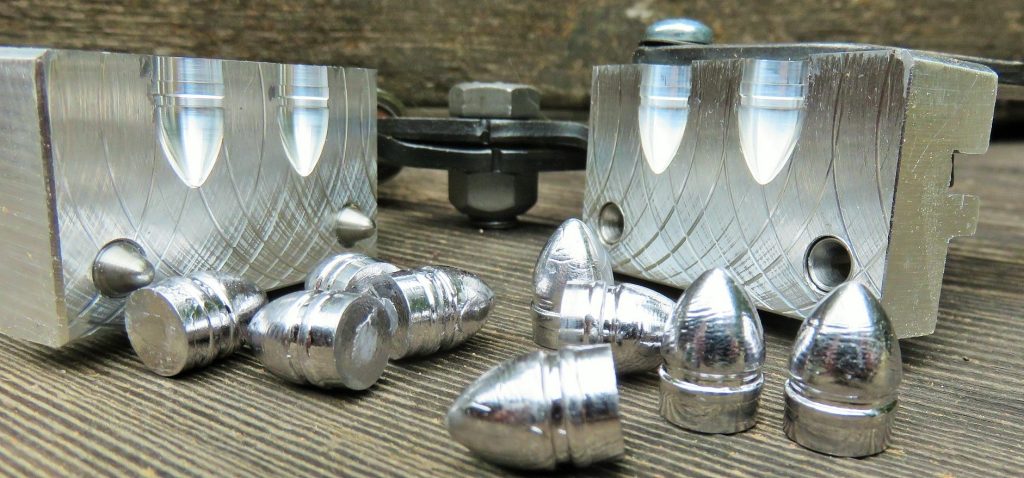
You might have noticed snapping caps on the empty gun before loading, to clear the nipples, has not been mentioned. I most certainly, in general, do recommend snapping caps before loading. However, with this Navy Model, I took the cylinder out of the gun and looked into the mouth of each chamber before loading the gun. When I could see light through the nipples, I figured they were clear. So far that method has worked very well.
While using a percussion revolver on the trail-walk, our club’s rules say that you must cap all of the nipples at the first target (because non-capped but loaded chambers are susceptible to chain fires, where more than the intended chamber gets ignited, and we must have good lubricating grease over the balls at the front of the chambers for the same reason), then fire your first shot, and then carry the gun in a holster without cocking the hammer or turning the cylinder any further. This means the hammer will still be down on the fired chamber. Furthermore, you are not to touch or handle the loaded revolver again until you have reached the shooting station for the next target. These are good rules to follow and they are designed with safety in mind for shooting with or as part of groups of other shooters.
Now this short-barreled .36 Navy six-gun is shooting the way I want to. The new front sight is one of the keys to that as well as simply getting to know the gun. The new SliX-Shot nipples also contribute a great deal to the gun’s performance. And I do expect to get to know it a lot better, as time goes on, because this gun will be used quite often.



